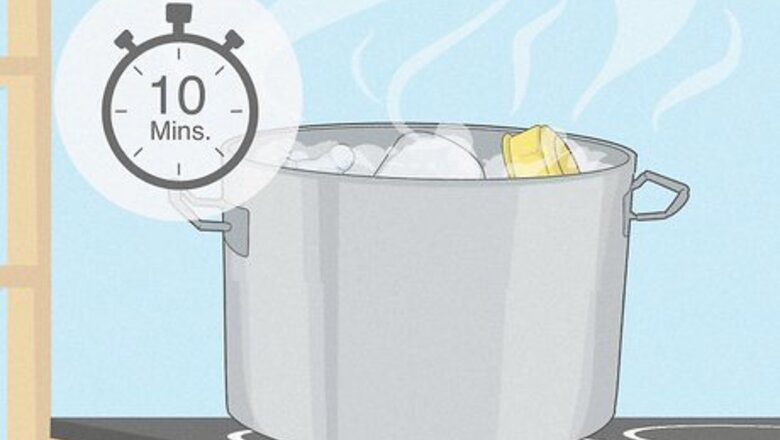
views
- Boil the glass baby bottle and components for 10 minutes to completely sterilize them.
- Glass baby bottles can typically be boiled, but double-check the manufacturer’s instructions to be sure.
- Alternatively, stick the glass bottle and its components in the dishwasher on a sanitizing cycle or thoroughly hand-wash the items with hot, sudsy water.
Ways to Sterilize Glass Baby Bottles
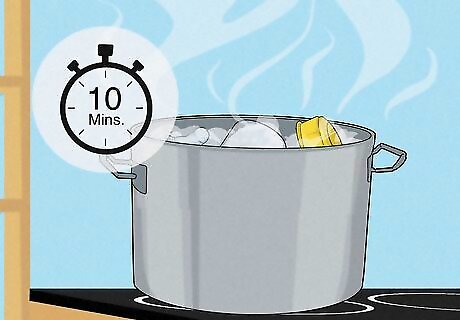
Boil the baby bottle components for 10 minutes. Separate the glass bottle components (like the teat and rings) and submerge them all in a water-filled pot. Then, turn on the heat and let the bottle parts boil for 10 minutes. To remove and use the bottles, grab a pair of clean tongs or handle the bottles with washed hands (after the water has cooled down). Inspect the teats afterward, since they can become cracked or damaged after being boiled. Double-check that there are no air bubbles stuck in the glass bottles before you start boiling them. Lactation consultant Mor Volner urges new parents to strike a balance in their sterilization practices, especially when it comes to boiling. Volner reminds that “you don’t need to boil the bottle for an hour, but you do want to make sure it’s cleaned adequately. The key is learning a balance—you don’t have to go to extremes.” Important note: Always double-check the manufacturer’s instructions to ensure that your glass bottle and its components are safe to boil. For instance, Dr. Brown’s Natural Flow glass bottle is considered safe to boil according to its instruction manual.
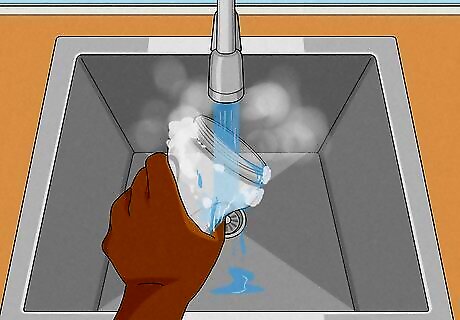
Clean the glass bottle thoroughly with hot, soapy water. Then, rinse out the bottle, teat, and any other components to get rid of any leftover soap. Lactation consultant Mor Volner agrees that using warm, soapy water in the sink is an adequate way to sterilize baby bottles.
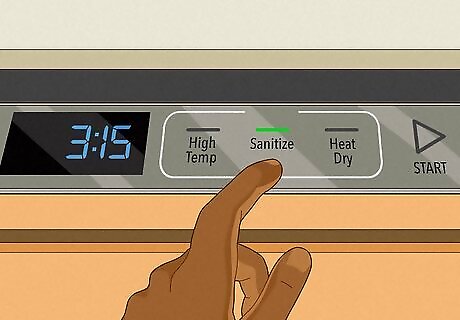
Wash the baby bottle components in a sanitizing dishwasher cycle. Put your bottle in a hot wash cycle and heated drying cycle. According to the CDC, extra sterilization (like boiling, bleaching, etc.) isn’t necessary as long as you take this step. If your dishwasher doesn’t have advanced settings like this, you’re better off using another sterilization method, like boiling.
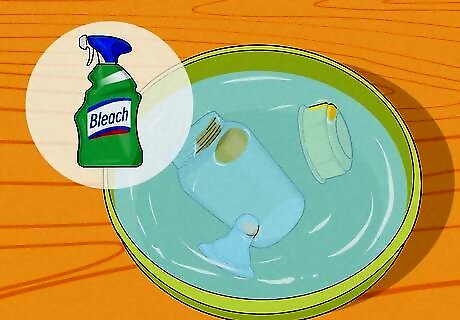
Soak the baby bottle components in a bleach mixture for 2 minutes. Fill a large basin with 1 US gal (3.8 L) of water with 2 tsp (9.9 mL) of bleach stirred in. Separate your glass bottle components and submerge them in the solution, getting rid of any air bubbles as you notice them. Wait 2 minutes before removing the components with a clean set of tongs or washed hands. The CDC advises against rinsing baby bottle items sanitized with bleach, since the water can bring in new types of bacteria. Instead, just let the items air-dry on a towel—the bleach residue will disappear quickly and won’t hurt your infant.
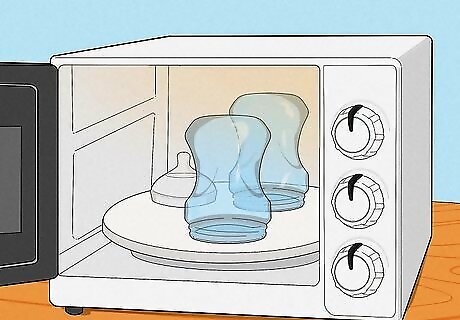
Use an electric or microwaveable steamer to sterilize glass bottles. Follow the provided instructions for your steam sterilizing device. Typically, this involves filling it up with water and then plugging it in or sticking it in the microwave. Lactation consultant Mor Volner agrees that microwaving can be an effective way to sterilize a baby bottle.
Best Practices for Glass Bottles
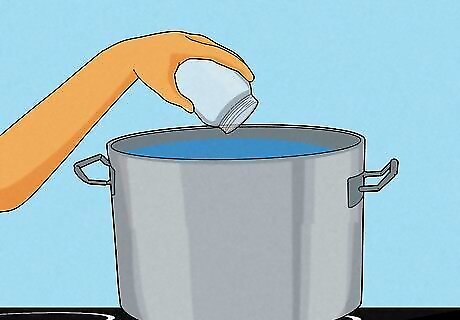
Sterilize the glass bottle before using it for the first time. Sterilizing before the first use is incredibly important, as it removes all the grime and germs from the packaging and from anyone who touched the bottle before you purchased it. Be sure to sterilize every part of the bottle, including the nipple and attachment rings.
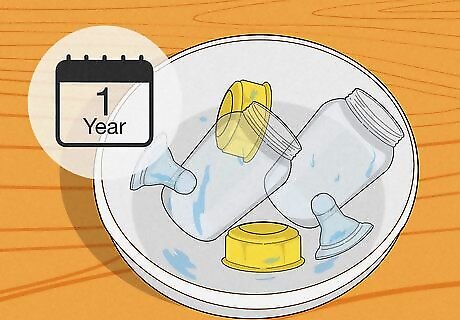
Sterilize your baby’s bottle regularly until their first birthday. Your baby’s immune system isn’t super strong in their early months, so proper sterilization can protect them from unwanted symptoms like vomiting and diarrhea. If your baby is healthy, you may not need to sterilize their feeding equipment every day as long as you’re washing it thoroughly. Talk to your baby’s pediatrician for specific guidance regarding your little one. Daily sterilization might be necessary if your baby is a preemie or if they don’t have a strong immune system (e.g., they’re receiving chemotherapy).
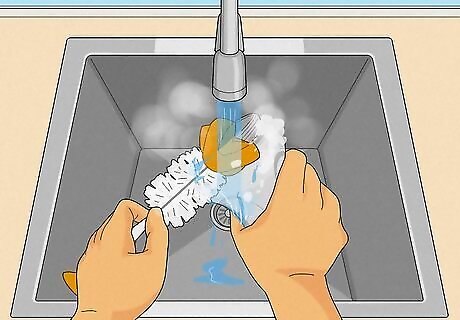
Clean the bottle before sterilizing it. Fill a sink or clean basin with hot, sudsy water and carefully clean all the components of your baby’s glass bottle. Use a bottle brush to help you reach the deep inner parts of the bottle, and use a small, narrow brush to reach the teat. Rinse off the equipment once it's washed. Try to wash your baby’s glass bottle as soon as you possibly can after they feed.
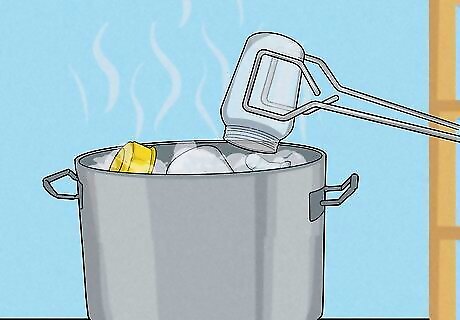
Wash your hands or handle glass baby bottles with clean tongs. Carefully wash your hands by lathering them soap, scrubbing them down, and rinsing them off for a total of 20 seconds. Alternatively, use a clean set of tongs to handle the bottles (like removing them from boiling water or a chemical solution).
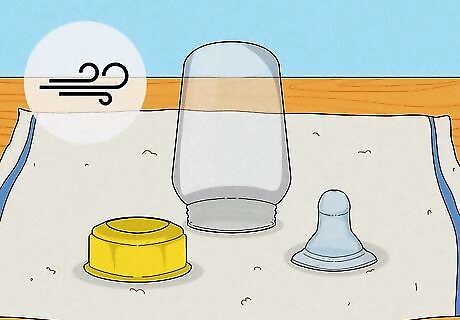
Air-dry cleaned feeding equipment with a towel. Don’t stick your clean glass bottle components on a drying rack—instead, place them on a clean dish towel or paper towel.
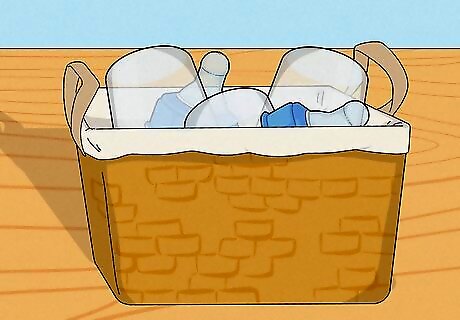
Store cleaned glass baby bottles in a pre-cleaned area. Sanitize a portion of your cabinets (or the storage area of your choice) with sanitizing wipes or another disinfectant. Once your glass bottle components are clean and dry, stash them in this clean area until you’re ready to use them again.















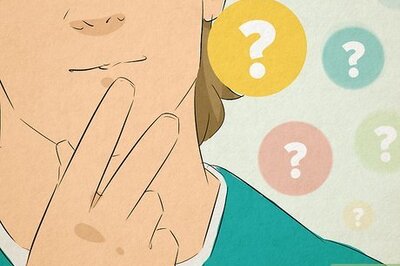
Comments
0 comment